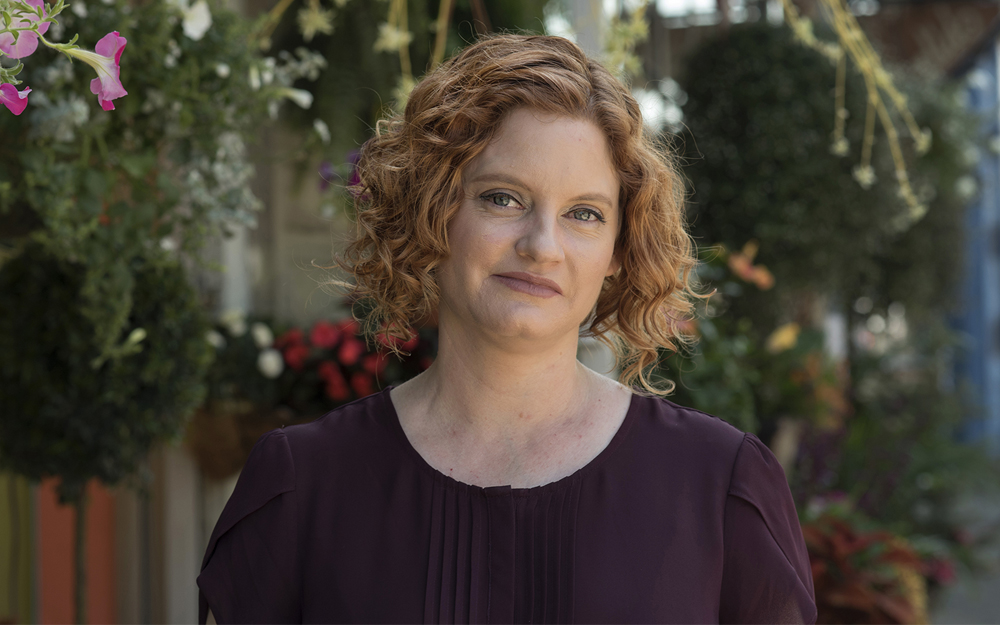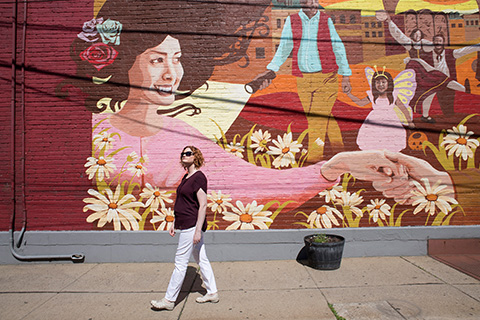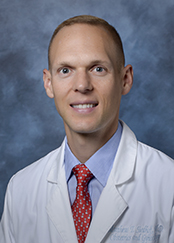Cedars-Sinai Blog
Finding a New Normal
Dec 03, 2018 Cedars-Sinai Staff

The show must go on.
Vicki Johnson, 38, knows the expression well. She grew up performing in school plays and community productions. She holds a degree in theater, and now she's working on her doctorate at the University of Pittsburgh.
She's worked through pain more times than she can count. Her first trip to a gynecologist was at age 16. It was also the first time she was told to just ignore the terrible pain that came with her periods. It wasn't the last.
"I was told that some women just have worse periods than others, and to just toughen up," Vicki says.
She saw a string of gynecologists and other specialists over time to deal with her heavy periods, pelvic pain and other symptoms. After other conditions had been eliminated, her symptoms pointed to endometriosis—a tough-to-diagnose condition that doesn't easily show up with imaging scans.
"I was told that some women just have worse periods than others, and to just toughen up"
In endometriosis, tissue that normally lines the inside of the uterus grows in other parts of the pelvis, like the ovaries and fallopian tubes. It thickens, breaks down and bleeds with each menstrual cycle, but the displaced tissue has no way to exit the body. This can harm and scar the surrounding tissue and organs, and cause them to stick to each other.
"I saw all these specialists," she says. "I tried every birth control pill under the sun. I would go through periods of time where I just sort of gave up trying to fix it. This is my normal."
For years she felt she had no option but to endure the monthly pain that came with her periods. But then it became more frequent, until it was daily pain in her pelvis, back and legs.
In addition, she was now feeling tired even after a night’s sleep, and couldn't shake a fatigue that seemed to last all day. Brain fog also broke her focus, which made working on her dissertation grueling. The last straw was having to give up her daily, hour-long exercise routine because it hurt too much.
Medications hadn't helped. The specialists she'd seen so far hadn't helped. Now the pain and symptoms were affecting every aspect of her life. So, next she took a scholar's approach. She studied the problem on her own.

Vicki Johnson
Finding the right help
Vicki began scouring medical journals and websites to learn more about endometriosis. The most helpful resource she found was a Facebook group for people with the condition, moderated by a retired nurse who kept a list of surgeons she vetted.
"They were doing more than just offering support," she says. "They were educating patients to advocate for better care."
Vicki began contacting Pennsylvania surgeons included on the list. She says she felt pressured to have a hysterectomy and remove her ovaries. Doctors frequently pushed this option once she'd tell them she didn't want to have children. However, removing the ovaries can increase the risk of heart attack. With a strong family history of heart disease, she was unwilling to put her heart at greater risk.
It was time to turn elsewhere, and she decided to turn back to her roots in Southern California. She asked Matthew Siedhoff, MD, a surgeon with Cedars-Sinai's Minimally Invasive Gynecologic Surgery program, for a phone consultation.

Matthew T. Siedhoff, MD
Matthew T. Siedhoff, MD
"I told him everything," Vicki says. "He told me my concerns are valid. It was the first time a doctor asked me what I wanted to do. My whole life, doctors were telling me my pain was normal or that I had to have a hysterectomy. He listened. I almost cried."
In April 2018, Vicki flew to Los Angeles for surgery. Her endometriosis had spread throughout her pelvis. Siedhoff was able to complete the surgery laparoscopically, using very small incisions, which helped cut down Vicki's recovery time.
In Discoveries: Unlocking the Mysteries of Endometriosis
Vicki noticed big differences just 3 days after her surgery. She felt clearheaded, motivated and ready to work. The intense pain, fatigue and brain fog were finally gone. She's looking forward to getting back to her daily exercise routine and back into the classroom. Now she can do it without the pain she's fought since she was 16.
"I really wish I would have known that kind of pain isn't normal, and that someone would have taken that pain more seriously sooner," she says. "Just because you have a uterus, you don't have to accept being cursed with horrible pain for your entire childbearing years."



